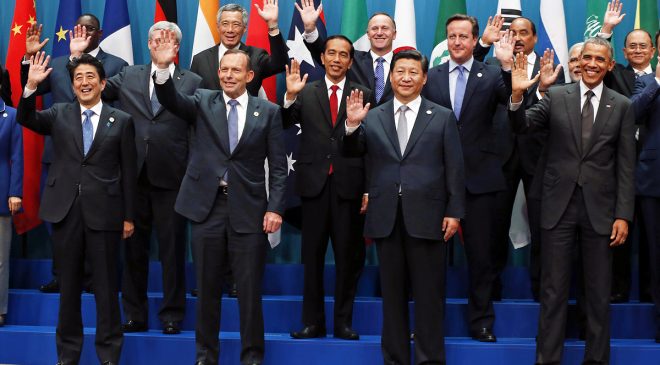Written by Brian Anderson.
The other day I began reading Walter Isaacson’s biography of Steve Jobs. Though I’m a bit turned off by some aspects of Jobs’s personality, I’m fascinated by the entrepreneurial eagerness that seemed to fill his brain from an early childhood.
Looking back, many other industry titans, including Mark Zuckerberg and Bill Gates, also had jobs when they were young; their intuition wasn’t limited to the classroom.
Zuckerberg developed Synapse Media Player during high school. Gates wrote a computerized program for scheduling classes at the Lakeside School when he was 16. And, at the same age, Jobs (with Steve Wozniak) created and sold blue boxes.
Even Andrew Carnegie networked as a telegraph messenger at the age of 15.
If more children were given the chance to develop skills in which they’re interested over and against the dictates of school board bureaucrats, our economy would produce even more CEOs. Yet, instead, they’re trapped inside jail-like classrooms for the entire day, 5 days a week.
H. L. Mencken described schools in the following way:
School-days, I believe, are the unhappiest in the whole span of human existence. They are full of dull, unintelligible tasks, new and unpleasant ordinances, brutal violations of common sense and common decency. It doesn’t take a reasonably bright boy long to discover that most of what is rammed into him is nonsense, and that no one really cares very much whether he learns it or not.
I’ve written before — a history explained in great detail by people like John Taylor Gatto — that the original intent of public school in the United States was to purposefully suppress this adventurous, outside-of-the-box thinking and to, in exchange, teach obedience to an abstract collective. It’s no surprise the results are disastrous.
Now we have an extremely successful businessman who also despises America’s inefficient school system. Peter Thiel, the brilliant man who cofounded PayPal and was an important investor in Facebook’s youth, is also an avowed libertarian. Earlier this year, the Thiel Foundation announced the winners of an exclusive fellowship that pays teenagers to opt out of school in order to work on their new ideas. They’re offering the same opportunity next year, too; the application for it is due on December 31.
One of Thiel’s winners in 2011 is a girl named Laura Deming. According to her profile, she began working in a biogerontology lab when she was 12 and matriculated at the Massachusetts Institute of Technology when she was 14. Laura is now 17 years old and remains extremely optimistic about her ability to one day extend the human lifespan, a rare topic detailed by researcher Aubrey de Grey. Thanks to Thiel’s financing—a paradigm Deming also hopes to change—her new company is currently in the works.
What if these young people hadn’t had the opportunity to leave school? What if they were forced to fit through mind-draining lectures until the age of 18 like “normal” kids? What if they weren’t given a chance to reach their intentions outside of the classroom?
Government advocates have long sought to implement stricter legislation against children working in the private sector. When coupled with compulsory attendance mandates for students, this leaves no room for kids’ creativity to roam freely.
As Einstein said, “It is, in fact, nothing short of a miracle that the modern methods of instruction have not yet entirely strangled the holy curiosity of inquiry.”
These entrepreneurs aren’t what most people think about when they hear the term “child labor,” despite that they fit the official definition.
The vision of 19th-century factories filled with little kids mixing mortar disregards nearly 200 years of technological advancement and capital acquisition, two highly important steps in relieving young workers. To say that labor laws are responsible for saving us from that situation is almost like saying that, without the Food and Drug Administration, our medicines would still consist of opium- and cocaine-centered elixirs.
The assumption that we got rid of child labor through legislation is a myth. Children were leaving the workplace even a century before the Fair Labor Standards Act was passed.
Clark Nardinelli, an economist for the USFDA, explained this observation pattern in a paper entitled “Child Labor and the Factory Acts.” He writes,
It is clear that children under ten were a negligible part of the [1830s] work force in every textile industry but silk, which was exempt from the minimum wage provision. Most of the children to whom the law applied were ten, eleven, or twelve years old.
There were also “educational clauses” thrown into the Factory Acts, which attempted to force children into schools. Yet there was no evident increase in literacy rates within the affected post-1835 districts, two years after the legislation was enacted.
Nardinelli adds,
Technological change in general tended to reduce the relative demand for child labor. […] Older teenagers could take the place of adults, but children under fourteen were complements to adult workers, not substitutes. Even when machinery became easier to operate, eleven year old workers did not take over the machines. Instead, children preformed secondary tasks, picking up waste cotton, running errands, and generally assisting older workers. Their most important task was piecing together broken threads. As technological change led to improved machines there was less waste and fewer broken threads. Better organized factories required fewer secondary workers and the relative demand for child labor decreased.
This is where we once again observe the phenomenon of child labor disappearing in factories that are able to acquire sufficient capital. This is why younger workers are found in most third-world countries, where the children just have no better option.
Colombia’s economy, for example, has been ravaged by political corruption and the increasingly-militarized drug war, so it comes as no surprise that the country’s child labor rate has drastically elevated during the decade. Reformers like Camilo Dominguez insist that, since Colombia’s unemployment rate is above 10 percent, there is no reason that children should be working.
“It must be a priority in this country to restore the rights of these children immediately and mobilize ourselves to discourage our society from allowing them to continue working,” Dominguez said.
While it makes sense to desire a lower unemployment rate and a strong workforce without involving child labor, reformers fail to realize these children aren’t stealing adults’ jobs. It’s simple: companies hire children when they can’t afford adults. If Colombia decides to pass strict legislation against young workers, the job opportunities once occupied by them will no longer be available to anyone at all. They won’t exist.
If the Colombian government passes strict child-labor laws, they will push children away from services and industry into business sectors that tend to have less oversight. In Colombia, this commonly means mining and agriculture.
Why force the children into roles that they would enjoy even less?
One UNICEF report discusses the setbacks to Bangladesh’s economy after the Child Labor Deterrence Act (introduced by US Senator Tom Harkin) was passed in the 1990s. Its purpose was to set up a tariff against foreign goods manufactured by child laborers, which resulted in the dismissal of 75 percent of children working in the country’s coveted garment industry.
As a result, the children ended up working “primitive roles” that included life-threatening gigs from street hustling to child prostitution, the latter of which, especially for young girls, usually devolved into a forced occupation. Many couldn’t even find these dangerous jobs, though, so “the mothers of dismissed children had to leave their jobs in order to look after their children.” This meant, as a result of not-so-noble American legislation, that two people in many families were forced out of the workplace.
As families accumulate capital, it’s easier to take leisure time, and that is the mechanism that allows children to attend better schools, get a nicer jobs, and do anything else they desire. It’s why many writers in the olden days praised new factories that were willing to employ women and children.
Another Argument Against Legislation Against Child Labor
The ethical argument, so to speak, against government interference is that child labor legislation makes it illegal for children to voluntarily work. Even if the legislation worked wonders for unemployment rates and got every child out of factory work, let’s face the fact that many kids just aren’t fit for traditional public school. The lives of Steve Jobs, Albert Einstein, and others suggest that this may be a good sign.
The system is failing in the first place, so why not allow children to get a hands-on education in other respectable fields? The Fair Labor Standards Act admittedly makes a few exceptions, but bureaucrats in D.C. shouldn’t have the power to choose how children live their lives.
Young individuals become adults when they decide to take full control of their own bodies — not when they hit an arbitrary age — at which point they can form these voluntary business relationships without outside interference. Is it not deplorable that governments force students to go to school?
Public school is child exploitation at its best.
When discussing these concepts with people, let’s also make sure to take note of the huge difference between allowing children to voluntarily work for money and forcing them to work for little to no compensation. Many kids just want to make a little extra cash during the summer, much like the 7-year old girl who opened a lemonade stand last year (only to have it shut down by regulators for failing to purchase a $120 temporary license).
Then again, as Jeffrey Tucker points out, “there is one final exemption, as incredible as this may be: federal law allows states to allow kids to work for a state or local government at any age, and there are no hourly restrictions.”
God bless everyone who wants to make sure that the children of our world aren’t exploited. My heart is with you by all means. But, if you promote child-labor laws, you’re going at it the wrong way and may very well leave poor communities worse off than before.
Let kids choose, and let parents protect. Government agencies will bend to politics. Families will not.



